Abstract
STUDY OBJECTIVE--As there is a social status gradient in chronic disease mortality in Australia, this study aimed to establish whether there were substantial differences among socioeconomically defined groups with respect to food choice and nutrient intake, in the context of risk of nutrition related chronic diseases. DESIGN AND PARTICIPANTS--Cross sectional data were collected from a randomly selected population sample of 1500 urban Australian adults. Data were collected by postal questionnaire, which included an assessment of dietary intake and questions on sociodemographic details. Three measures of social position were collected: occupation, educational status, and income status. Occupation was interpreted both on a continuous, prestige scale, and also as categorical occupational groupings. MAIN RESULTS--The study achieved a 70% response rate. Higher social status was generally associated with healthier dietary intakes, with lower fat and refined sugar densities, and higher fibre densities, but also with higher alcohol density. No differences were found in salt, polyunsaturated fat, protein, or complex carbohydrate densities across groups. Food intake differences were also found between occupational status groups, with the upper social groups tending to consume more wholegrain cereal foods, low fat milk, and fruit, and less refined cereal foods, full cream milk, fried meat, meat products, and discretionary sugar; but also more cheese and meat dishes. CONCLUSIONS--Although this study did show statistically significant differences across social status groups in relation to nutrient and food intakes, these differences were small compared to the disparity between intakes of all groups and the recommended patterns of intake, and did not appear to be great enough to be a major explanatory variable in differences in disease risk across groups.
Full text
PDF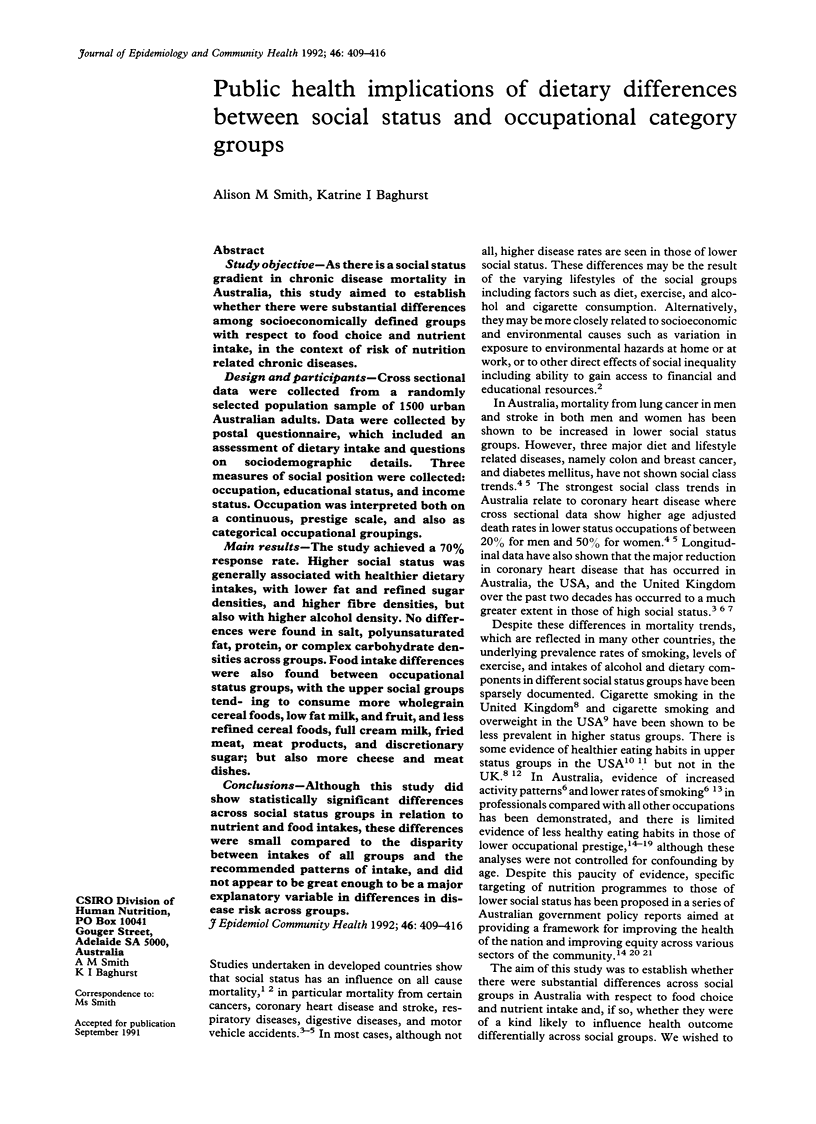
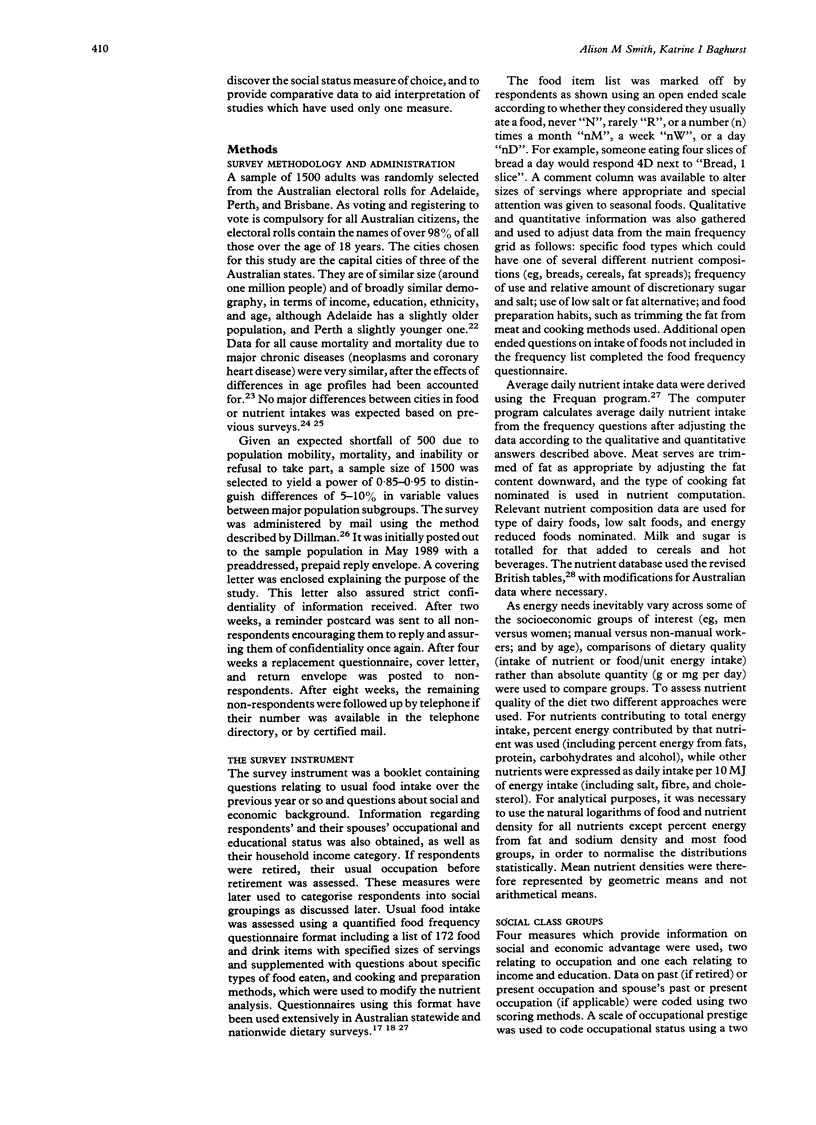
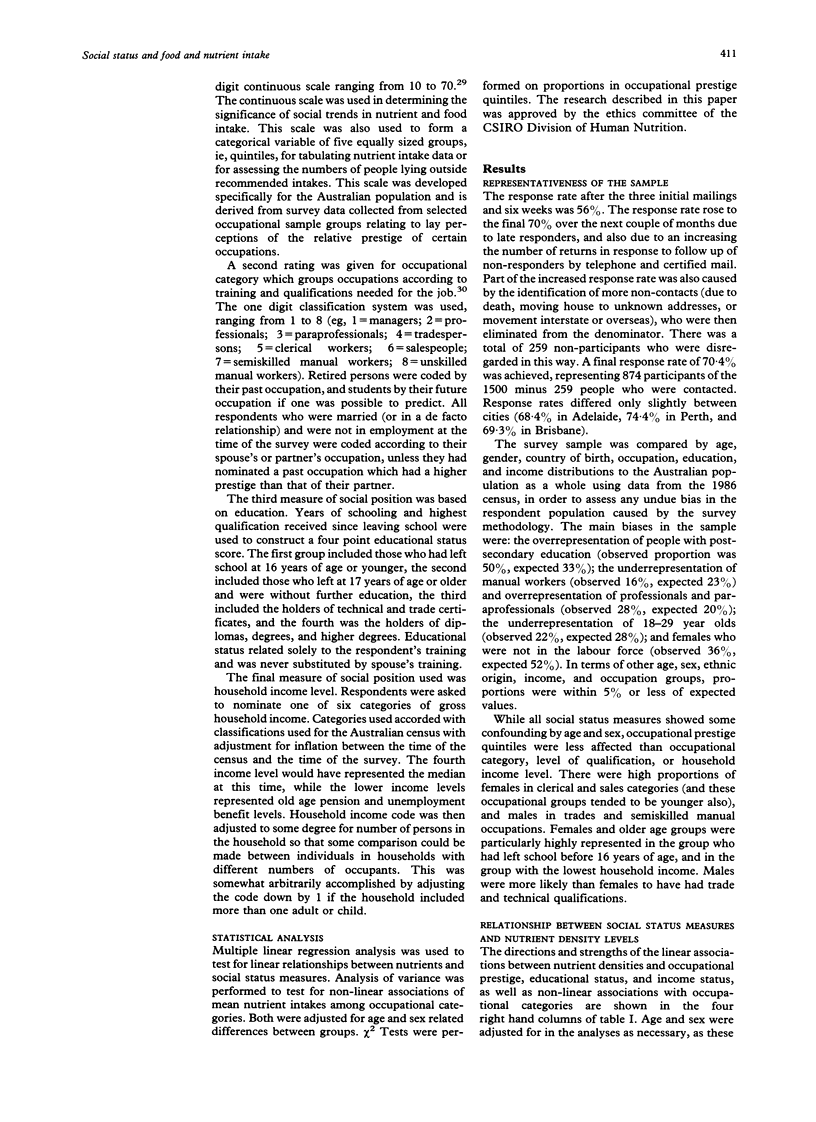
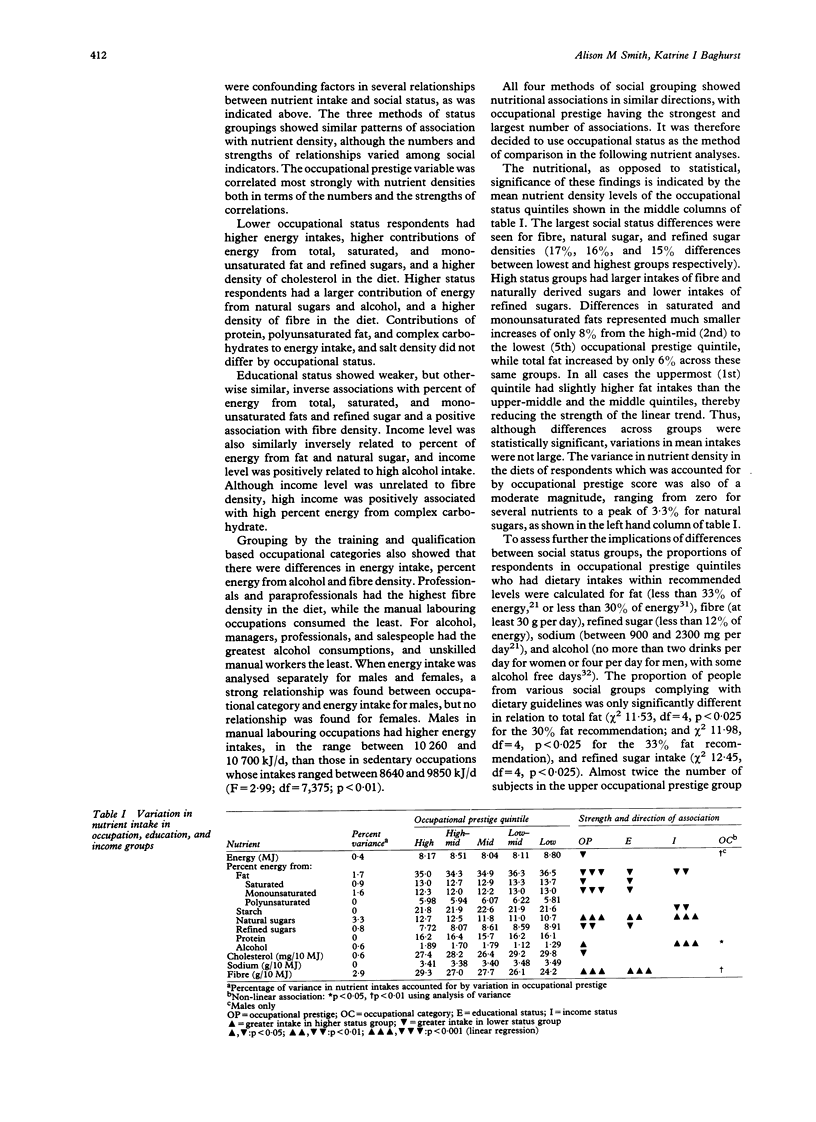
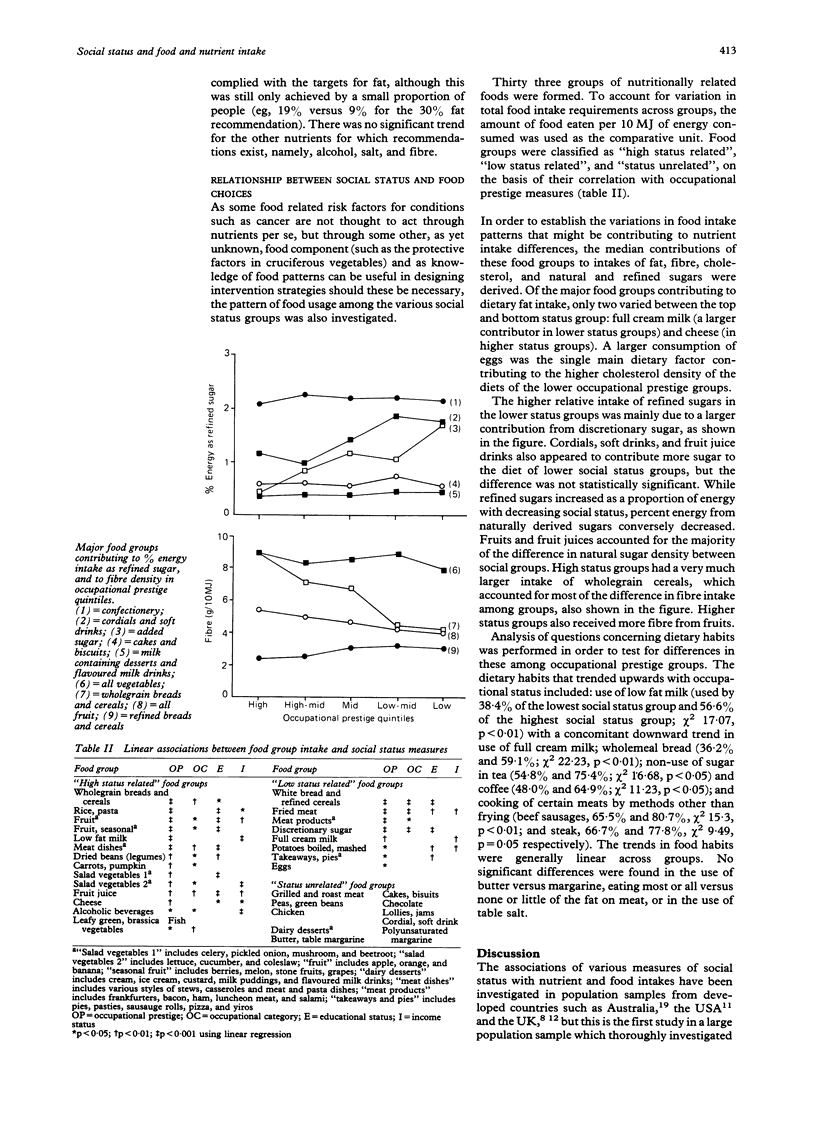
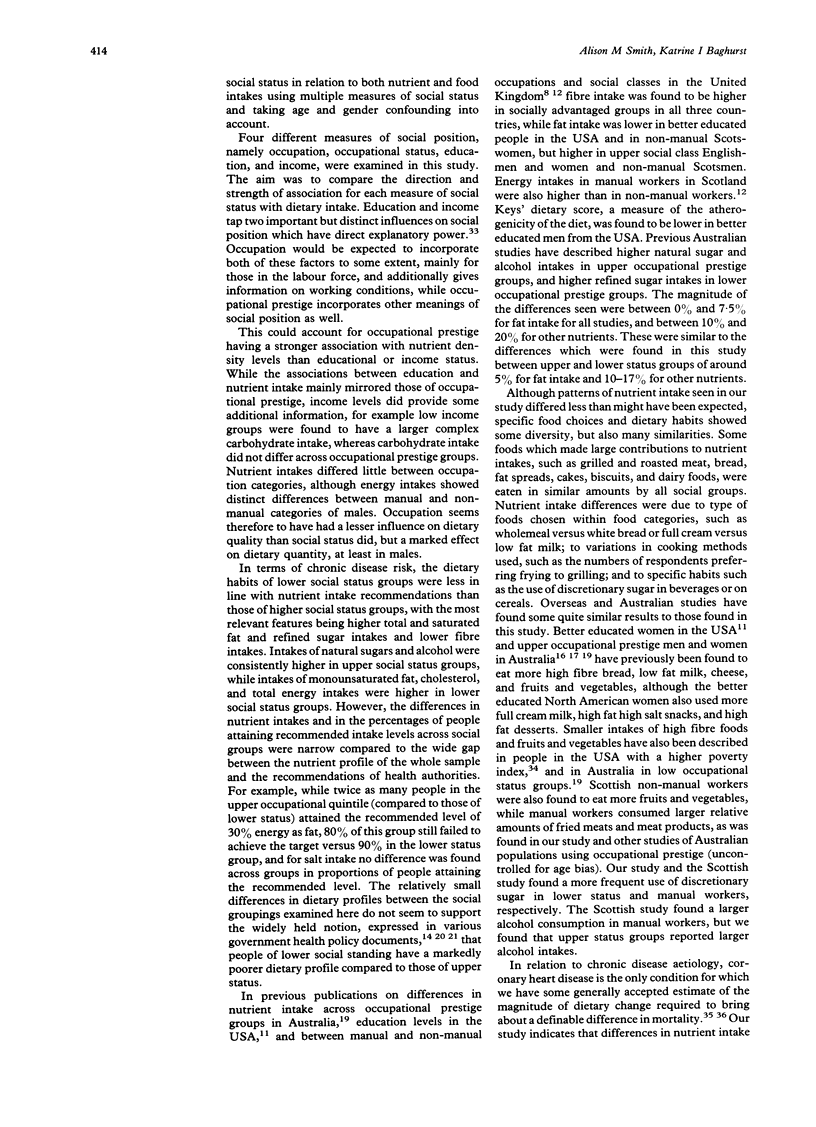
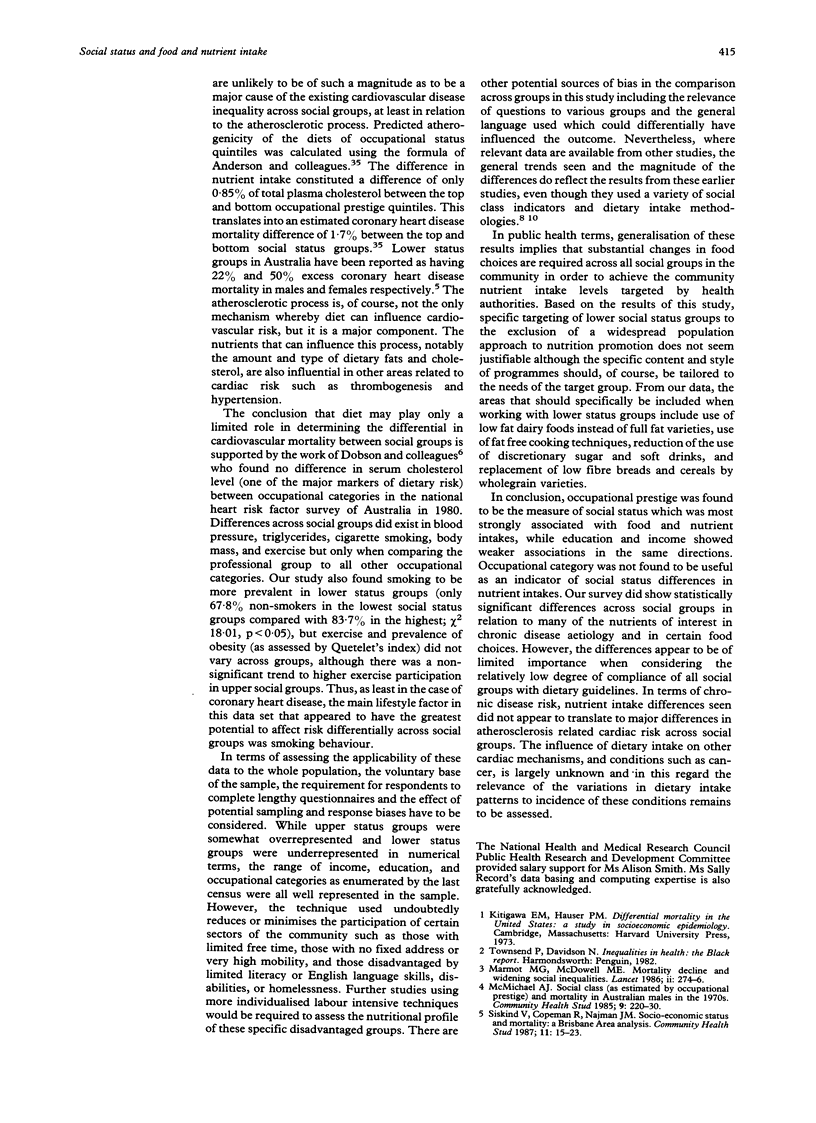
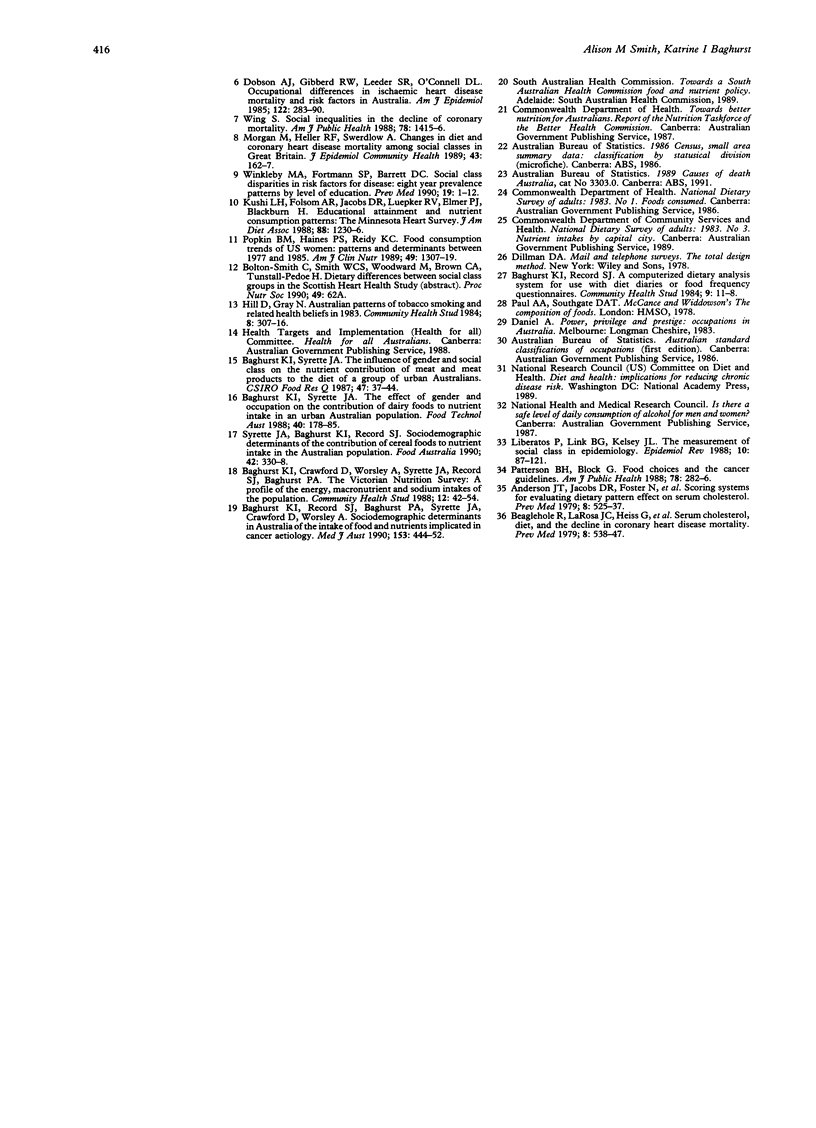
Selected References
These references are in PubMed. This may not be the complete list of references from this article.
- Anderson J. T., Jacobs D. R., Jr, Foster N., Hall Y., Moss D., Mojonnier L., Blackburn H. Scoring systems for evaluating dietary pattern effect on serum cholesterol. Prev Med. 1979 Sep;8(5):525–537. doi: 10.1016/0091-7435(79)90328-1. [DOI] [PubMed] [Google Scholar]
- Baghurst K. I., Crawford D., Worsley A., Syrette J. A., Record S. J., Baghurst P. A. The Victorian Nutrition Survey: a profile of the energy, macronutrient and sodium intakes of the population. Community Health Stud. 1988;12(1):42–54. doi: 10.1111/j.1753-6405.1988.tb00571.x. [DOI] [PubMed] [Google Scholar]
- Baghurst K. I., Record S. J. A computerised dietary analysis system for use with diet diaries or food frequency questionnaires. Community Health Stud. 1984;8(1):11–18. doi: 10.1111/j.1753-6405.1984.tb00419.x. [DOI] [PubMed] [Google Scholar]
- Baghurst K. I., Record S. J., Baghurst P. A., Syrette J. A., Crawford D., Worsley A. Sociodemographic determinants in Australia of the intake of food and nutrients implicated in cancer aetiology. Med J Aust. 1990 Oct 15;153(8):444–452. doi: 10.5694/j.1326-5377.1990.tb126148.x. [DOI] [PubMed] [Google Scholar]
- Beaglehole R., LaRosa J. C., Heiss G., Davis C. E., Williams O. D., Tyroler H. A., Rifkind B. M. Serum cholesterol, diet, and the decline in coronary heart disease mortality. Prev Med. 1979 Sep;8(5):538–547. doi: 10.1016/0091-7435(79)90329-3. [DOI] [PubMed] [Google Scholar]
- Dobson A. J., Gibberd R. W., Leeder S. R., O'Connell D. L. Occupational differences in ischemic heart disease mortality and risk factors in Australia. Am J Epidemiol. 1985 Aug;122(2):283–290. doi: 10.1093/oxfordjournals.aje.a114100. [DOI] [PubMed] [Google Scholar]
- Hill D., Gray N. Australian patterns of tobacco smoking and related health beliefs in 1983. Community Health Stud. 1984;8(3):307–316. doi: 10.1111/j.1753-6405.1984.tb00459.x. [DOI] [PubMed] [Google Scholar]
- Kushi L. H., Folsom A. R., Jacobs D. R., Jr, Luepker R. V., Elmer P. J., Blackburn H. Educational attainment and nutrient consumption patterns: the Minnesota Heart Survey. J Am Diet Assoc. 1988 Oct;88(10):1230–1236. [PubMed] [Google Scholar]
- Liberatos P., Link B. G., Kelsey J. L. The measurement of social class in epidemiology. Epidemiol Rev. 1988;10:87–121. doi: 10.1093/oxfordjournals.epirev.a036030. [DOI] [PubMed] [Google Scholar]
- Marmot M. G., McDowall M. E. Mortality decline and widening social inequalities. Lancet. 1986 Aug 2;2(8501):274–276. doi: 10.1016/s0140-6736(86)92085-4. [DOI] [PubMed] [Google Scholar]
- McMichael A. J. Social class (as estimated by occupational prestige) and mortality in Australian males in the 1970s. Community Health Stud. 1985;9(3):220–230. doi: 10.1111/j.1753-6405.1985.tb00489.x. [DOI] [PubMed] [Google Scholar]
- Morgan M., Heller R. F., Swerdlow A. Changes in diet and coronary heart disease mortality among social classes in Great Britain. J Epidemiol Community Health. 1989 Jun;43(2):162–167. doi: 10.1136/jech.43.2.162. [DOI] [PMC free article] [PubMed] [Google Scholar]
- Patterson B. H., Block G. Food choices and the cancer guidelines. Am J Public Health. 1988 Mar;78(3):282–286. doi: 10.2105/ajph.78.3.282. [DOI] [PMC free article] [PubMed] [Google Scholar]
- Popkin B. M., Haines P. S., Reidy K. C. Food consumption trends of US women: patterns and determinants between 1977 and 1985. Am J Clin Nutr. 1989 Jun;49(6):1307–1319. doi: 10.1093/ajcn/49.6.1307. [DOI] [PubMed] [Google Scholar]
- Siskind V., Copeman R., Najman J. M. Socioeconomic status and mortality: a Brisbane area analysis. Community Health Stud. 1987;11(1):15–23. doi: 10.1111/j.1753-6405.1987.tb00126.x. [DOI] [PubMed] [Google Scholar]
- Wing S. Social inequalities in the decline of coronary mortality. Am J Public Health. 1988 Nov;78(11):1415–1416. doi: 10.2105/ajph.78.11.1415. [DOI] [PMC free article] [PubMed] [Google Scholar]
- Winkleby M. A., Fortmann S. P., Barrett D. C. Social class disparities in risk factors for disease: eight-year prevalence patterns by level of education. Prev Med. 1990 Jan;19(1):1–12. doi: 10.1016/0091-7435(90)90001-z. [DOI] [PubMed] [Google Scholar]


